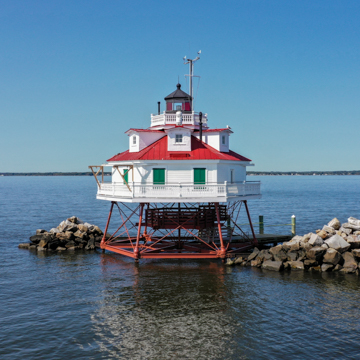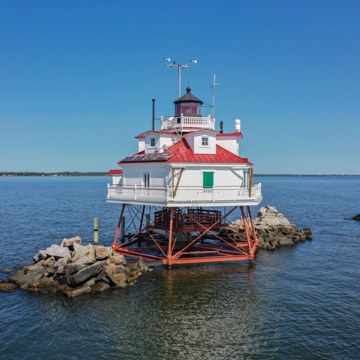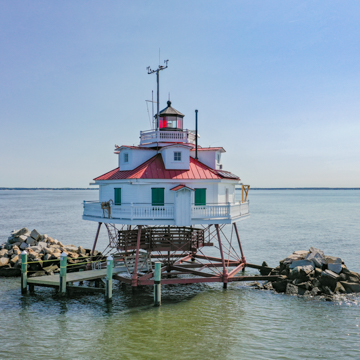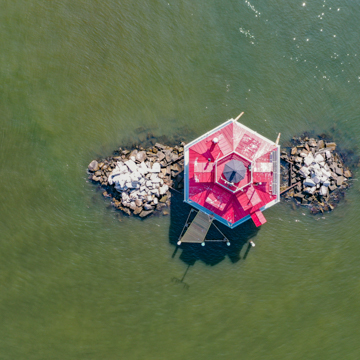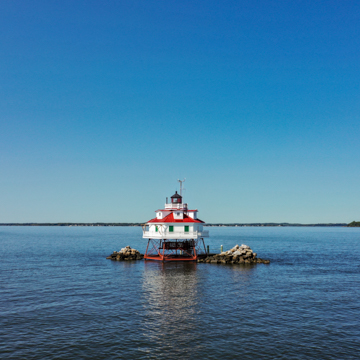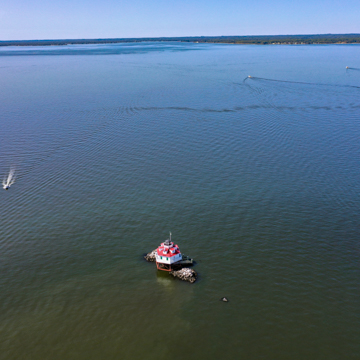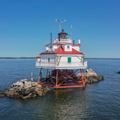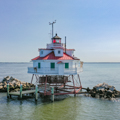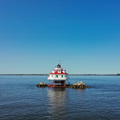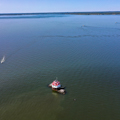This is the last unaltered screw-pile cottage light station on its original site in the United States, built from a standard plan developed by the U.S. Lighthouse Service. The screw-pile type was an easy and effective method of anchoring a lighthouse in a non-stable, off-shore location such as sandy or muddy shoals. It is among the few remaining of as many as one hundred such lights built mostly along the southeastern seaboard. It features a hexagonal, frame, cottage-like structure built over a steel-frame deck that is mounted to the wrought-iron screw-pile foundation; the light is housed within a lantern atop the cottage.
Wrought-iron screw-pile technology was developed by Irish engineer Alexander Mitchell in the 1830s, improving upon a late-nineteenth-century design by Henry Whiteside for a frame structure built on wood piles. It is one of only four extant screw-pile light stations in Maryland; the others are Hooper Straight, Drum Point, and Seven Foot Knoll.















